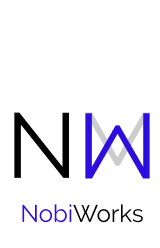The Art and Science of Visibility for Underrecognized Leaders
So, why is that person so much further along than you. Even, when you’re both leveraging the same things (tactics, strategies, etc.)? If you’ve guiltily swatted this thought away, satisfying yourself with platitudes about comparison and mindset struggles, you’re in good company. We all have. Turns out, that’s not all there is to it.
Here’s the bad news: Attention, like many resources, is not allocated neutrally. It is in fact allocated along racial lines—and likely gender lines as well. This means that if you hail from an underrecognized community, people have been conditioned to give you less of it. This is a point I find myself sharing again and again. Because it is so new. Now for the good news: You’re about to get a very hands on, concrete primer on what in the ever loving heck is actually going on.
Updated: 03/26/2025
The Visibility Game (as it is currently understood)
First thing’s first. Let’s get on the same page about visibility.
Many would have you see visibility as a moment in time: You’re visible, then you’re not. You’re seen, then you’re not. On, off. But like many things that involve human brains, visibility is actually a process.
After all, being seen doesn’t mean you’ve been noticed.
Case in point: we see plenty of things that our brains filter out for us. As a result, as far as we’re concerned, those things were never there in the first place. Would you consider the small fleck of lint your eyes registered on your sweater visible to you? Even if you never noticed it? Never actually realized it was there?
What about that new approach to participatory philanthropy you’re hoping to build support around or the research backed insight you have on burnout that will change everything? Would seen but not noticed count as visible for them?
Likely not.
Visibility is a process.
To give it an actual definition, visibility is simply your work and ideas being seen in the right light, by the right people.
And the process involves gaining, maintaining and translating attention.
This is why, when folks think about how attention works, they usually come away with something like this:
You find the right eyes
You put your thing in front of those right eyes
If it’s a thing they want and need (and can justify spending resources on) they buy, or invest, or support.
Simple right? That’s because in a perfect world, visibility and attention would be predictable indicators of demand. They are supposed to be a predictable indicator of demand.
Now here’s the thing people aren’t quite saying: They aren’t.
And that’s all because of the new economics of attention.
The New Economics of Attention
This is what the process of attention actually looks like.
You become visible: You literally begin the visibility process. Make it possible. As you’re doing this, you’re generating what I call visibility potential. Think of this as a sort of potential energy. When actualized that potential becomes attention.
You are noticed: Something—usually an event—activates their notice and makes you and your platform relevant. This gets you safely on the other side of the brain’s filters.
You are stored (in Long Term Memory): Think of memory as a galaxy of stars. Your brand gets stored in this galaxy as a constellation—hopefully slotted into the most relevant part of this galaxy.
You help remind them: At this point you are refreshing people’s memories as they go back and forth between exploring and evaluating different options. Take note: these options aren’t always who you see as your peers.
You are remembered: The person(s) in question decide to decide. They reach into their memory and pull up their short list of candidates from long term memory.
They make a choice: They make their decision. They act on their choice.
And you can lose their attention at any point in this sequence.
This may seem obvious to you now, as someone literally living in a time where there have never been more demands on our attention, but many common marketing, branding and PR techniques still rely on assumptions made during times when visibility impact—or cut through in the attention economy—was much easier to attain. Now a days, attractive branding made visible is no longer the sure bet to visibility impact it was.
Branding = A brand's (memorable) assets
Brand = a system of ideas that influences the behavior of others. A.k.a. a type of influential real estate in someone's head.
The ultimate goal is for exposure to you and your ideas to translate into commitment. That is where your brand’s influence comes in. If exposure to you and your ideas secures investment in those ideas pretty predictably, then that means your brand can navigate this six part sequence with some predictability. Translation: your brand’s influence is pretty high.
So, in order to get what you want from your visibility initiatives, your visibility impact and brand’s influence need to be healthy and hale.
Here’s what’s new:
When you’re underrecognized, you’re dealing with two additional challenges; Visibility Biases and The Invisibility Tax.
People have been conditioned to overlook you in particular. Literally. As an underrecognized person, you actually get less visibility potential for your work. That’s because visibility biases allocate attention away from you. And this absolutely has consequences for your visibility impact and your brand’s influence. Imagine a literal acid eating away at and corroding these three assets constantly. What that means is that you, as an underrecognized person, have to contend with diminished cut through or visibility impact, and a diminished capacity to translate brand exposure into commitment, just for being who you are. And it is with these eroded tools that you must confront the noise in your marketplace. This is where that gap you’ve been sensing comes from. That feeling of “why are they so much further along, when we’re doing the same things?”
Yes, there’s all the mindset talk. Don’t compare your today to their yesterday, etc. And to a certain extent that’s true.
But you’re also not imagining that gap.
It’s real.
And it’s not there because you’re not “showing up in enough places”When you’re underrecognized, more resources are demanded of you than of your peers to navigate this sequence and maintain that attention. You pay an Invisibility Tax. Your Invisibility Tax can include: An ambition penalty, a reciprocity ransom or a whole host of other facets.
This means the visibility resources you use to navigate the attention sequence are being eaten away (by visibility biases) AND you’re being asked to use more of your resources (time, energy, visibility potential, etc.) to make your way through the sequence.
It’s an assault on all fronts.
How to Fix It
This isn’t a problem that PR or Marketing can solve. Showing up in more places, while these biases remain unaddressed is really just teaching folks to filter you out.
This is a brand level problem.
And you solve it by improving your brand’s ability to pull interest and push change. The actual steps are these:
Establish or Refine an obvious reason to pick you or your idea
Position yourself to attract the invitations and allies you’ll need to build a movement or power your influence
Set up a system of consensual prompting that will actualize your influence at scale.
So, now you know. Visibility doesn’t work the same for you as it does for others. Now you know why. And now you know how to fix it. If you have more questions about any of these concepts, grab my on-demand Visibility Clinic, “The Art and Science of Amplifying World Changing Ideas.” Not only will this answer your lingering questions, it will also put you on the waitlist for the live Visibility Clinics I host, where you get the opportunity to ask me your visibility questions, and I get the opportunity talk nerdy about visibility. It’s a win-win really.
Reciprocity release: All kidding aside, reciprocity is a real concern for underrecognized folks. As I shared in a recent podcast, reciprocity is a privilege and it, like visibility, doesn’t work the same for us. So, when I do something at no charge, I ensure I am adequately compensated in other ways. In the case of the Visibility Clinics, hearing your questions allows me to suss out new visibility biases and new dimensions of the Invisibility Tax.


